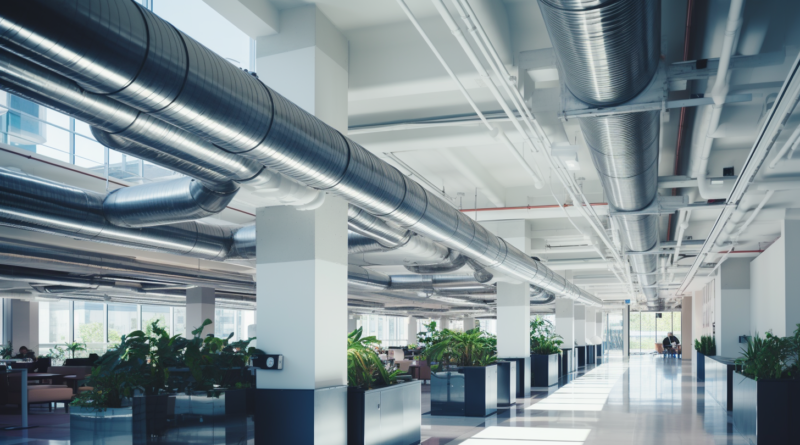3 Reasons Why an Office Building’s Air Ducts Need Cleaning
Offices serve as epicenters of collaboration, ideation, and tireless work. The environment must be optimized within these walls for health, creativity, and efficiency. Yet, an underlying system, often overlooked, can significantly influence these factors: the building’s air ducts. These intricate channels circulate air throughout the space, but they can introduce various concerns when left unattended.
1- Air Quality Improvement
The air we breathe profoundly affects our health and well-being. Dirty air ducts circulate contaminants like dust, pollen, and other allergens, compromising indoor air quality. Prolonged exposure to these particles can provoke allergic reactions, exacerbate existing asthma symptoms, and even instigate other respiratory challenges for occupants.
In addition to these common allergens, damp or neglected air ducts can become a breeding ground for mold and bacteria. These pathogens not only contaminate the air, producing unpleasant odors but can also pose serious health risks when inhaled regularly.
While health remains paramount, air quality also has a tangible impact on productivity. A cleaner, pollutant-free environment naturally encourages better concentration, reduced illnesses, and improved employee morale.
2- Energy Efficiency and Cost Savings
Clogged air ducts impede the natural airflow, making HVAC systems labor-intensive and less efficient. When these systems have to push air through congested ducts, they consume more power, leading to escalated energy bills—a cost that companies could otherwise save with regular duct maintenance.
Clean air ducts ensure an unobstructed flow of air, maximizing the efficiency of HVAC systems. When these systems operate at their optimal capacity, not only do they consume less energy, but they also tend to have a longer operational lifespan. This longevity means reduced capital expenses in the long run, as the need for frequent replacements or major repairs diminishes.
Furthermore, efficient HVAC systems are less prone to unexpected malfunctions. Such unforeseen disruptions, especially during critical times or extreme weather, can be more than just an inconvenience; they can halt business operations, resulting in potential revenue losses.
3- Protecting Office Equipment and Infrastructure
Every piece of equipment in an office, from computers to photocopiers, performs best in a clean environment. When allowed to settle on these devices, dust and airborne pollutants can hinder their functionality, causing them to overheat or malfunction. Such hitches can disrupt daily operations, lead to data losses, and increase maintenance costs.
Aesthetically, a dusty environment can tarnish a company’s professional image. First impressions matter, and a clean, well-maintained space reflects positively on clients and potential business partners, underscoring a company’s attention to detail and standards.
On a more foundational level, unchecked mold growth in air ducts can migrate to other parts of the building structure. Over time, this can lead to substantial structural issues, requiring expert repairs, and, in extreme cases, can even compromise the health and safety of the building’s inhabitants.
The state of an office’s air ducts reflects its commitment to health, productivity, and operational efficiency. The benefits of regular maintenance extend beyond just breathable air, influencing overall employee well-being, the cost-effectiveness of operations, and the protection of crucial business infrastructure. It’s not just about maintaining equipment—it’s about nurturing a positive, proactive, and health-focused work environment for all.




